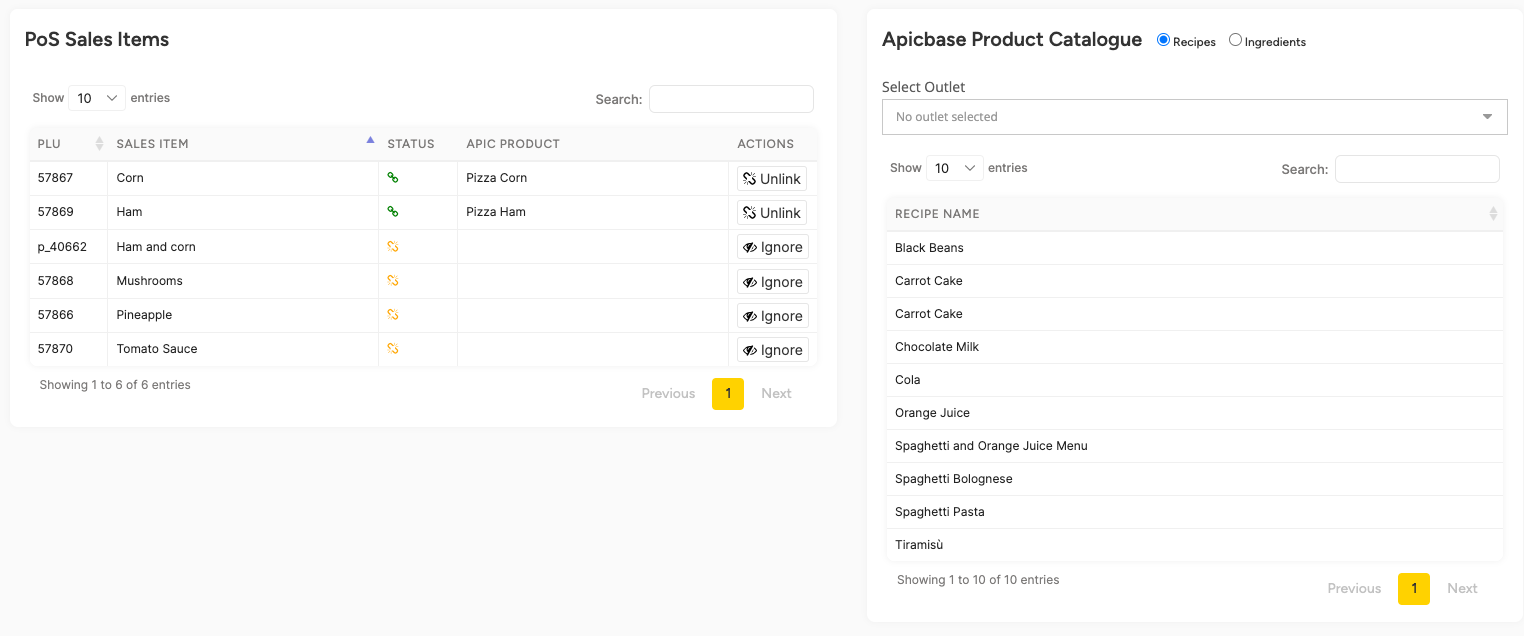Upload Items and Groups
This is done via the Create Items and Groups endpoint. In this initial step, the POS uploads the entire catalogue for a specific location into Apicbase, complete with POS items and their item groups. Modifier add-ons are also specified here.
To populate the POS catalogue for multiple locations in Apicbase, this process needs to be repeated for each location separately. This is because product catalogues in Apicbase are location-specific and independent of each other. Even if multiple locations have the same product catalogue, the process should be done multiple times, once for each location.
To ensure that cost analysis is accurate and up-to-date, it is crucial to keep the product catalogue synchronised with Apicbase. This can be accomplished by establishing an automated routine that regularly uploads the catalogue structure. The "create items and groups" endpoint is intended to receive this complete structure with a single request. The information that is uploaded represents the current state of the catalogue and what will be displayed to the user in Apicbase.
From the user dashboard, items and categories from the integrated POS can be found under Sales > PoS Connection.

Don't see any products in the POS linking page?De-select the filter on the left-hand side that says "Show Problem Products".
This filters on items that have been sold but that are not linked to any recipes. If you're building an integration but haven't uploaded any sales yet, no POS items will be shown while this filter is active.
Deleting Items
For the best user experience, it is important to keep the product catalogue in Apicbase clean and aligned with the POS system. If your POS system supports this functionality, it's equally important to inform Apicbase about inactive or deleted POS products.
When bulk uploading the product catalogue via the Create Items and Groups endpoint, Apicbase considers the present upload as the version of the catalogue to be recorded. This means that any items not included in the upload will be treated as deleted, and Apicbase will mark them accordingly.
Deleting a POS item doesn't erase historical sales data from Apicbase, but it hides the product away from the user's default view in the POS product overview.
Linking Items to Recipes
This step is performed by the customer.The process of linking POS items to Apicbase recipes is not a concern for the POS system integration. It is the customer's responsibility, with assistance from our customer success managers. This information is provided here for completeness, and if needed, for testing purposes.
Once the POS product catalogue is uploaded, the next step is for the customer to link their POS items to the existing Apicbase recipes. This step is crucial as it informs Apicbase where to look when processing the uploaded sales data to deduct raw materials from inventory and conduct cost analysis. By linking POS items to their corresponding recipes, customers get the most out of their integrations.
This is what the POS linking interface looks like:

On the left, you see items retrieved from the POS. On the right, a list of recipes.
Updated 6 months ago
